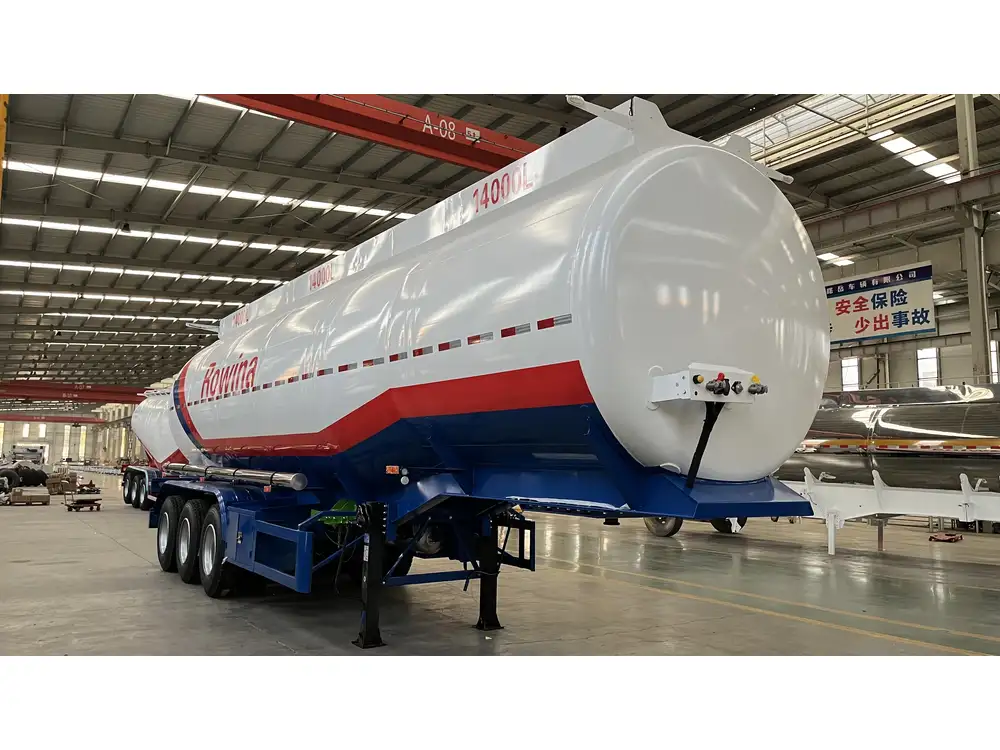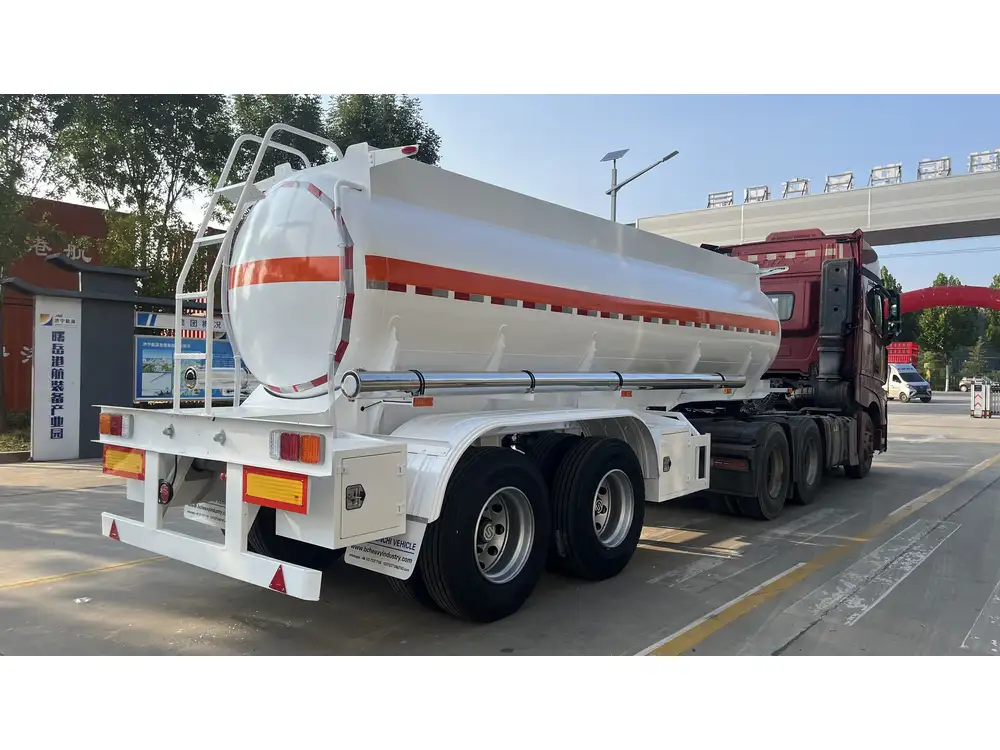When it comes to logistics and transportation, one aspect stands out in importance: the dimensions of the vehicles used, particularly semi-trailers. Understanding how many square feet a semi-trailer occupies is crucial for freight planning, load optimization, and ensuring compliance with local regulations. This article delves into the square footage of semi-trailers, offering detailed insights, comparisons, and practical applications.
The Basics of Semi-Trailer Dimensions
Standard Sizes of Semi-Trailers
Semi-trailers come in a variety of shapes and sizes, tailored to meet specific transportation needs. The most common types of semi-trailers include:
| Trailer Type | Inside Length | Inside Width | Inside Height | Approx. Square Feet |
|---|---|---|---|---|
| Standard Van | 53 feet | 8.5 feet | 8 feet | 450 |
| Reefer Trailer | 53 feet | 8.5 feet | 8 feet | 450 |
| Flatbed | 48 feet | 8.5 feet | N/A | 408 |
| Tanker | 48 feet | 8 feet | N/A | 384 |
Note: Square footage is rounded and based on typical internal dimensions; actual measurement may vary based on manufacturer design and specifications.

Calculating Square Footage
To calculate the square footage of a semi-trailer (or any rectangular container), the formula is straightforward:
[ \text{Square Feet} = \text{Length} \times \text{Width} ]For example, a standard 53-foot van trailer with a width of 8.5 feet is calculated as follows:
[ 53 \text{ ft} \times 8.5 \text{ ft} = 450.5 \text{ sq ft} ]Utilizing this formula allows logistics professionals to quickly assess the space available for cargo, which is invaluable in planning truck loads efficiently.
The Importance of Understanding Semi-Trailer Square Footage
Optimizing Load Capacity
Maximizing the load capacity is vital for cost-effective transportation. By understanding the square footage of a semi-trailer, freight companies are better positioned to make informed decisions regarding the type of cargo they can transport. This directly affects:
- Cost Efficiency: Higher capacity can lead to reduced cost per unit of cargo.
- Regulatory Compliance: Securely loading the maximum allowable weight without exceeding limits ensures adherence to road safety regulations.

Compliance with Regulations
Many regions impose specific restrictions on the dimensions and weight of transport vehicles. By understanding how many square feet a semi-trailer utilizes, companies can ensure they stay within legal boundaries, particularly regarding height and width thresholds.
Evaluating Trailer Types for Specific Loads
Considering the purpose behind the transportation helps in choosing the ideal semi-trailer type. Here are a few examples:
- Reefer Trailers: Ideal for temperature-sensitive goods that demand consistent refrigeration.
- Flatbeds: Excellent for oversized cargo that cannot fit inside traditional trailers.
- Tanker Trailers: Specifically designed for liquid transport, taking advantage of their unique shapes and dimensions.
Implications of Semi-Trailer Square Footage on Freight Costs

Freight Class Determination
The National Motor Freight Classification (NMFC) system categorizes freight based on various factors, including dimensions. Understanding the trailer’s square footage supports accurate freight class identification, which influences shipping rates and overall logistics costs. Higher classes typically incur increased shipping costs, whereas lower classes offer savings.
Fuel Economy
Transportation efficiency isn’t solely hinged upon the weight and volume of cargo. The dimensions of the semi-trailer, including its square footage, also play a significant role in fuel consumption. Larger, heavier trailers often demand more fuel. Thus, freight companies are encouraged to find a balance between load maximization and operational efficiency.
Practical Applications of Trailer Square Footage Knowledge

1. Load Configuration Example:
When planning a load for a 53-foot standard van trailer, knowing its square footage facilitates effective arrangement of packages to prevent damage and optimize space. For instance:
Pallet Configurations: Standard pallets measure 40 x 48 inches (approx. 13.33 square feet). Thus, a 53-foot trailer can typically accommodate:
[ \frac{450 \text{ sq ft}}{13.33 \text{ sq ft/pallet}} \approx 33.75 \text{ pallets} ]
Based on how many pallets can fit, it becomes evident whether the shipment meets capacity requirements.
2. Load Planning Tools and Software:
Modern logistics software often includes features for loading optimization based on specific trailer dimensions and weight limits. By inputting the square footage data, these tools can automatically recommend the most efficient load configurations, enhancing operational efficiency.
3. Performance Evaluation:
Evaluation of different trailer types in real-life conditions can yield insights into performance and usability. For instance, recorded data on the square footage versus the actual load carried may uncover trends in loading patterns and unloading times, guiding users in making informed trailer selections for future loads.

Conclusion: Mastering Semi-Trailer Footage for Superior Logistics
Understanding how many square feet is a semi-trailer is not just a trivial metric; it is a gateway to unlocking the potential of transportation logistics. From optimizing load capacity and ensuring compliance to strategic cost management, the implications of trailer dimensions pervade the entire freight landscape.
By leveraging this knowledge, logistics managers can make decisions that enhance efficiency, reduce costs, and promote safety. Whether determining the best type of semi-trailer for a specific job or calculating potential freight class, the square footage of semi-trailers remains a foundational aspect of effective logistics management.
FAQs About Semi-Trailer Dimensions
Q: Can semi-trailer dimensions vary significantly between manufacturers?
A: Yes, while standard dimensions exist, each manufacturer may offer variations that affect the internal space, so always check specific measurements.
Q: Are there weight restrictions for semi-trailers based on dimensions?
A: Absolutely. Each state has weight limitations based on axle and overall trailer dimensions, impacting how much cargo can be legally transported.
Q: How do I choose the right trailer size for my cargo?
A: Assess the dimensions of your cargo, consider its weight, and match those requirements against the available trailer types, taking square footage into account.
In summary, armed with the understanding of square footage and its implications, professionals in the logistics industry can face the challenges of transportation with greater confidence, ensuring cost-effective and compliant operations that meet today’s demanding marketplace.



